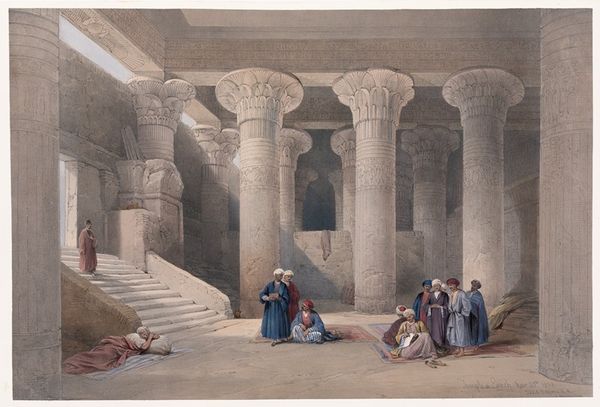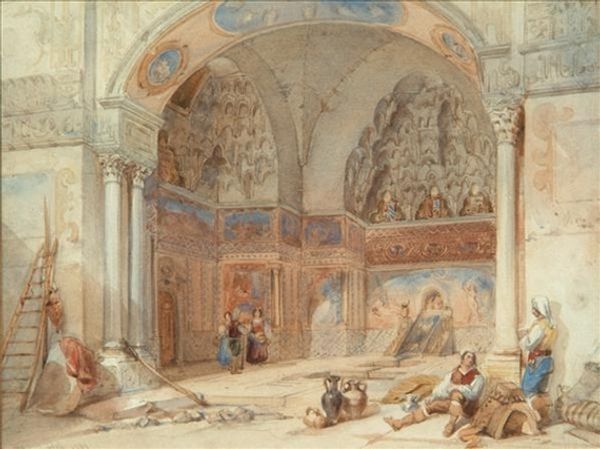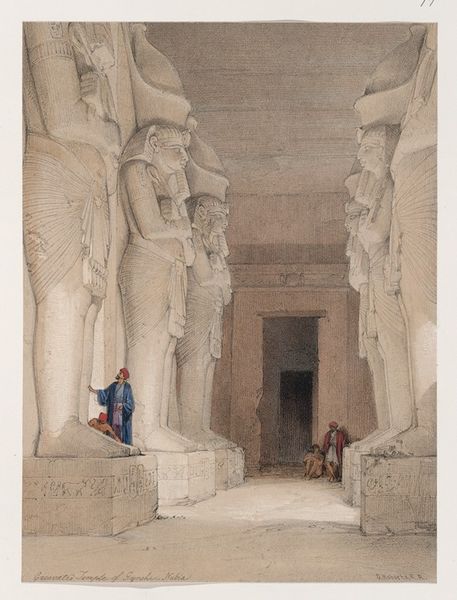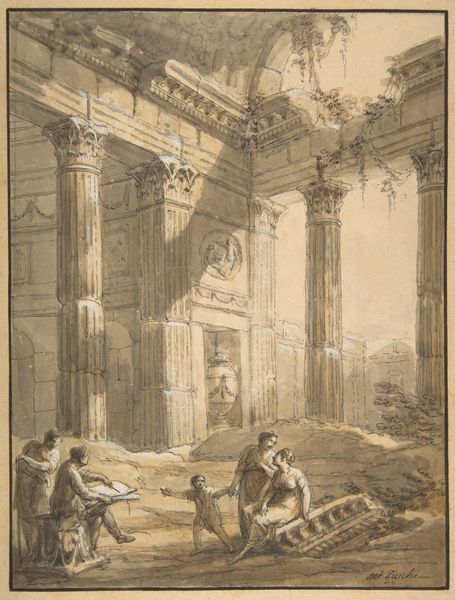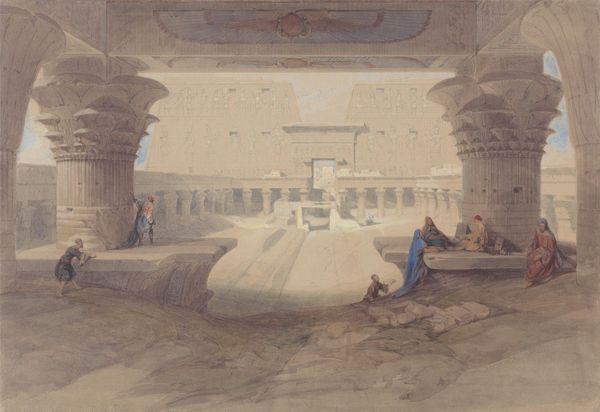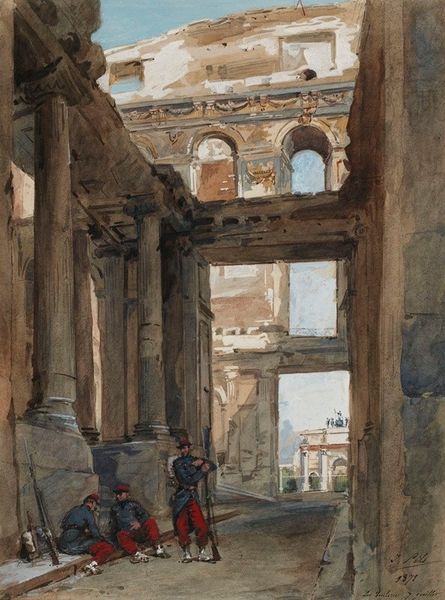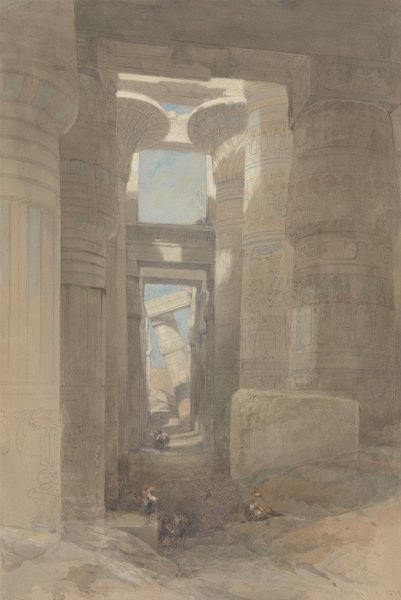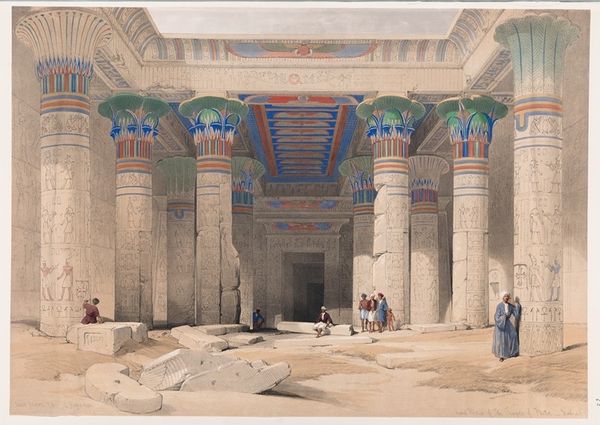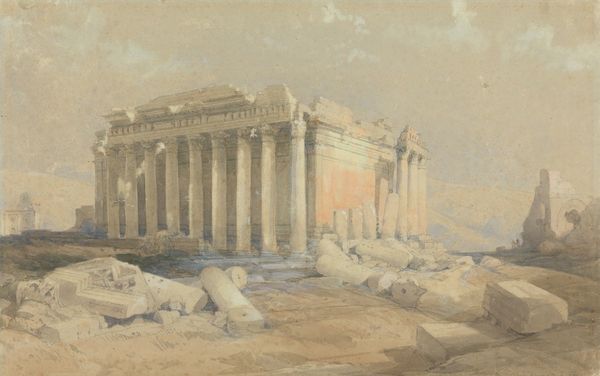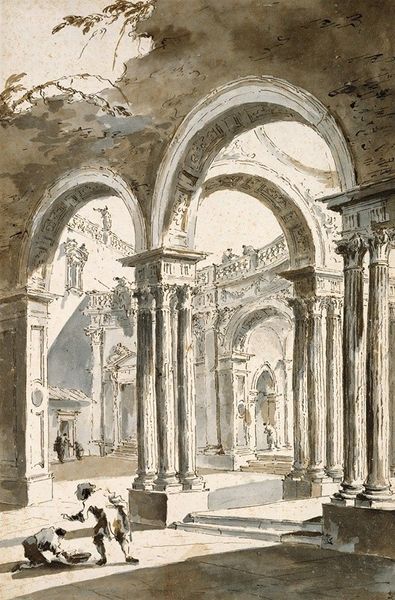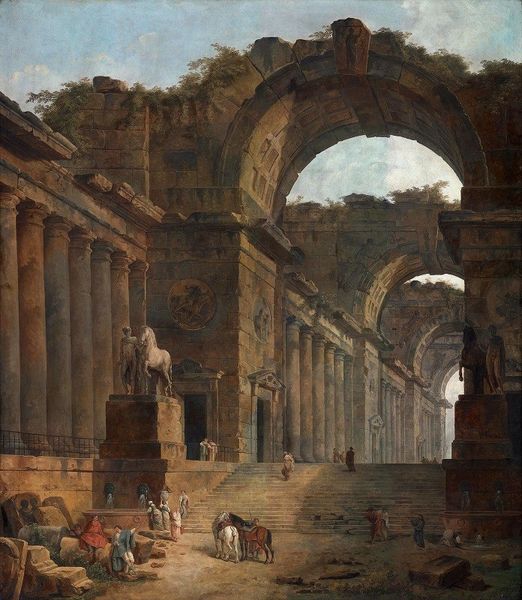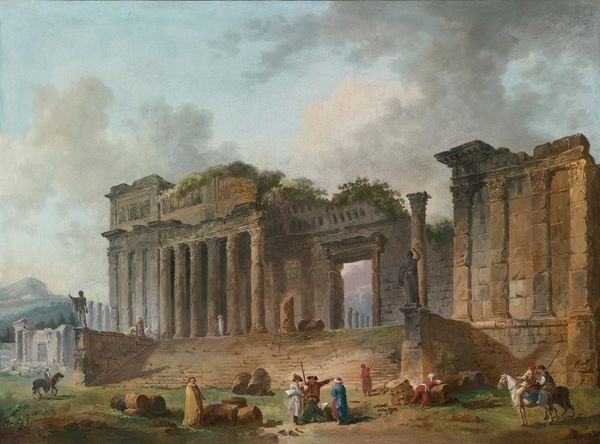
#
architectural sketch
#
amateur sketch
#
street view
#
incomplete sketchy
#
landscape
#
possibly oil pastel
#
oil painting
#
underpainting
#
painting painterly
#
watercolor
#
environment sketch
Copyright: Public Domain: Artvee
Editor: This is "The Grand Portico at the Temple at Esneh, Egypt," painted by David Roberts in 1838. It looks like watercolor on paper. The sheer scale of the temple interior juxtaposed with the small human figures is really striking. What catches your eye in this piece? Curator: Immediately, I am drawn to the rhythmic repetition of the columns. Roberts uses them to create a strong sense of depth and architectural structure. Note how each column is individually rendered with variations in light and shadow, suggesting both volume and texture. Editor: So you see the composition as building depth and texture, regardless of the subject of a temple itself? Curator: Precisely. Roberts employs light not to simply illuminate but to articulate form and enhance the monumentality of the space. Consider, for instance, how the light grazes the surfaces, accentuating the hieroglyphs. It isn't really about Egypt. The Temple becomes secondary to pure aesthetics. Roberts masterfully manipulates watercolor, achieving a remarkable level of detail and luminosity. Editor: I see, so it’s more about how Roberts utilizes form and light to construct a compelling visual experience, independent of the subject matter. Curator: Exactly. The very materiality of watercolor, its transparency and fluidity, contributes to the artwork's airy and ethereal quality. Observe also how Roberts orchestrates contrasts—the rough texture of the ancient stone against the smooth, polished surfaces—drawing our attention to formal properties. Editor: Fascinating. I'd initially overlooked that in favor of looking at the story behind it. It is remarkable how form transcends subject. Curator: Indeed. The focus is the visual language, its inherent elements and their interrelations, crafting an aesthetic experience that stands on its own merit. The structural integrity dictates the viewing experience.
Comments
No comments
Be the first to comment and join the conversation on the ultimate creative platform.
